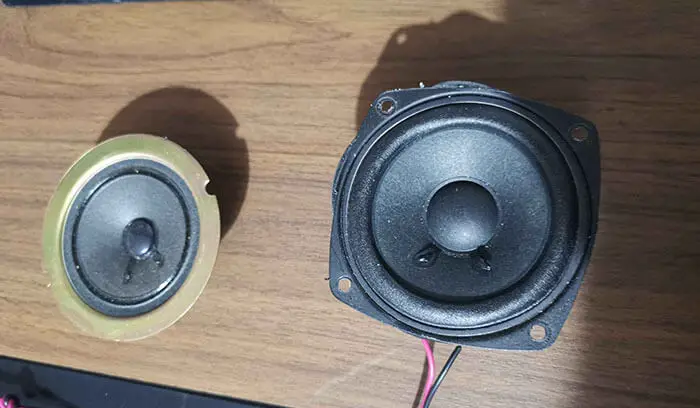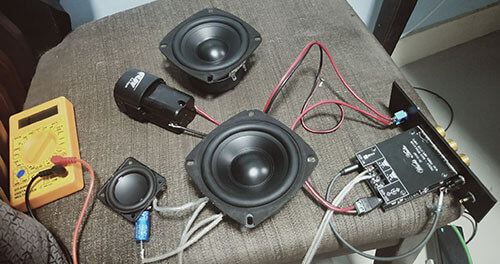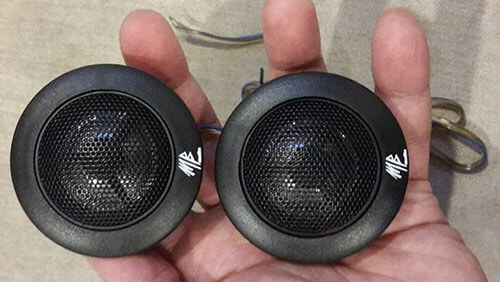Recently, I got my hands on a pair of new speakers. One day while playing some music around, the tweeter of one speaker was blown up. That got me worried as they were new speakers. While the other was fine, I thought of driving some research to fix this.
And guess what!! I could fix it easily. So this article is going to cover everything about blown tweeter sound. Here I will also share some tips that will prevent your tweeter from getting blown. So make sure to stay till the end!
How Does A Blown Tweeter Sound?

Tweeters are used for relatively higher and clearer notes. And for the entire system to sound as loud as possible. On a blown tweeter, if you play music, it will start playing initially. However, when you turn up the volume, it will pop out and explode.
The coil would burn and the music would eventually stop playing. That is when the tweeter gets blown. After that, either it gives you a buzzing or a rough scratch sound or it hardly sounds anything at all. Moreover, Increasing the wattage also leads to the same blown tweeter.
Do You Need Technician or Expert helps?
Reasons Leading To A Blown Tweeter
Tweeters are supposed to blow out randomly and you can blame a number of reasons for that. The most random reason is that the tweeters would just blow because of the excessive power that passes through them. However, other reasons include:
- It could be a wiring problem.
- There could be one or more bad capacitors.
- Sometimes the diaphragm gets faulty. In that case, you need to replace it with a new one.
How To Test If Your Tweeter Is Blown [Solutions To Fix]

If your tweeter gets distorted or blown, the first thing you’d do is test them. But how would you start? Well, I am going to share a few ways that will help you test it yourself. Moreover, I will also add solutions that could fix your tweeter for good.
- If your tweeter quits working, firstly measure its resistance using a multimeter. If you find values somewhere between 4-6 ohms, then the voice coil is probably working. However, if there is no reading at all and it smells charred, then the tweeter is blown.
- Separate the voice coil from the faceplate. Using a multimeter, check its readings. Connect the wires of the multimeter to the leads of the terminal. If it shows a value that remains within the range of 8 ohms, then it’s probably good. However if the reading shows a value that exceeds the limit, that means your tweeter is blown. In that case, replacing it with a new tweeter is necessary.
- Swab the voice coil and make sure it moves along with the tweeter. If the problem does not lie in the tweeter, that is if the tweeter works in the other cabinet, then you are most likely to blow capacitors. Replacing them would solve your problem.
- If you want to take the tweeter off apart for experiment purposes, start by removing the glue from the driver using a knife. Once it gets apart from the faceplate, replace the driver with a new one. Check whether the spade terminals fit. If they don’t, you need to solder or crimp them. Once you mount the driver to the surrounding faceplate, make sure it doesn’t come off. Drive a test and if it works smoothly to the ears, use some glue and screw it back.
Important Tips:
- If your tweeter is an old model and you are finding it difficult to get a new one of the same brand, then consider looking for one that looks identical and fits.
- You must clean all the glue residue out of all the nooks and crannies in between all the tabs. As for glue, I prefer using hot melt glue while it is hot. Especially on the edges. That will let the glue reach all the nooks and crannies and it will hold everything perfectly.
- Another technique that you could apply is to use a screwdriver to stick out the glue. And some needles to spread it evenly when you reapply it.
- Wear reading glasses to carefully inspect while applying the glue on the edges.
A Quick Fix Remedy In Case Of Emergency [Temporary]
If you are waiting for a replacement or an emergency case, follow this technique:
- Try bypassing the crossover.
- Connect both outputs of the crossover to the speaker. That will add up a little bit of range which might work temporarily for your tweeter.
How To Prevent Your Tweeter From Blowing

Like I mentioned earlier, tweeters are prone to getting blown or distorted. It could be unintentional but this happens to almost all of us. However, we could follow some precautionary tips to prevent the tweeter from blowing out.
- Make sure that the frequency of the amplifier or the radio is set correctly.
- Make sure to have the correct crossover to filter out the bad frequencies.
- All the tweeters come with a yellow capacitor that you must connect to the positive terminal of the speaker. A lot of people disconnect this capacitor wondering for its actual purpose. Do not disconnect this unless you have another replacement in your system. These capacitors block the lower frequencies below 2000hz so it prevents the voice coil from getting damaged.
- People often run the big-size tweeters on their car radio. The power of the car radio or amp is not enough for these giant tweeters. so the voice coil gets heated and the tweeters get damaged easily. In that case, add an amplifier for enough power sources.
- Try using a two-channel crossover for filtering the lower frequencies.
Frequently Asked Questions
There must be a lot of queries going on in your mind. So I thought of sharing the most frequently asked questions addressing a blown tweeter.
Can blown tweeters be repaired?
Well, they can be repaired but I am afraid the repair would not last long. If you want a temporary solution, you can repair it for the time being. However, you will have to replace it either today or tomorrow.
How do I know if my tweeters are damaged?
It’s simple. Just play some tone and check if there is any sound coming from the tweeter. If it fails to deliver any sound, then your tweeters are damaged.
What causes tweeter distortion?
When you play music in your system and raise its volume at a higher range than its limit, the tweeters explode and cause distortion.
Conclusion
I hope you are clear now about blown tweeter sound. I have also added some preventive measures that you can adopt for taking care of your tweeter. I still believe that the older vintage audio equipment is awesome when it comes to clean and loud audio. They are far better with astounding audio quality.
Just an advice, do not stress much about repairing if it doesn’t work out in your case. Seek the help of a professional in this regard. However, replacement becomes the only option left with you sometimes.
